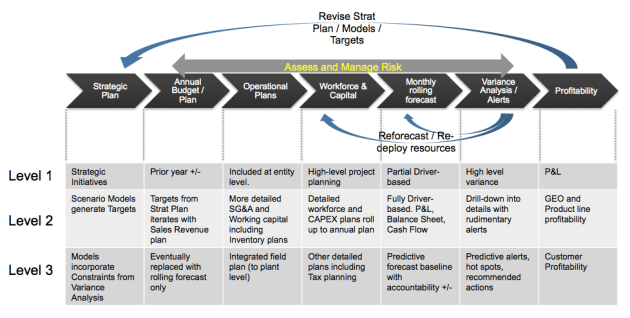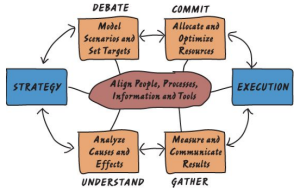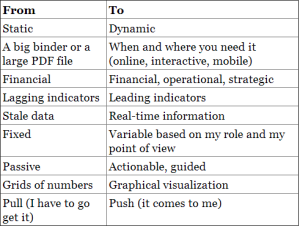EPM was designed to fill the strategy to execution gap. It’s the new approach to management that makes strategy everyone’s job, that gives them the tools and processes to execute based on focus, alignment, and accountability. Let’s discuss three of the five benefits of EPM that I share in my book Enterprise Performance Management Done Right: An Operating System for Your Organization (Wiley CIO):
- Management Efficiency

Differences between “Run the Business” and “Manage the Business”
EPM enables standard management processes that every company must do well: Budgeting, planning and forecasting Financial consolidation and statutory reporting Management reporting and business intelligence Profitability analysis, and Other financial and operational modeling, planning, analysis, and reporting EPM leverages the investment you have already made in Enterprise Resource Management, Customer Relationship Management, Supply Chain Management, Sales Force Automation, and other transactional systems.
- Executing Strategy
EPM can help close the loop between what you want to happen in the business (and how), and what actually happened (and why): Records and documents business model assumptions, constraints, and drivers Connects those models into your annual operating plans, budgets, and forecasts Monitors and alerts exceptional variances from actual to plan Helps you understand the root causes of variance and plug that corporate knowledge Ties it all together with a common business language and common master data to improve visibility, focus, and alignment Giving more stakeholder alignment .
- Improving Performance
EPM can have a material impact on the top and bottom line, on the balance sheet, and on overall return on capital: It can improve visibility into the key drivers of value in the business. It can show the cause and effect relationship of operational metrics on financial performance. It helps you focus on the right things in the business. It can bring agility to business models and organizational structures. Giving better business decisions that are based on more timely information
You can learn more about EPM and how it can help your organization build a common business process to execute it’s strategy in my book Enterprise Performance Management Done Right: An Operating System for Your Organization (Wiley CIO)







